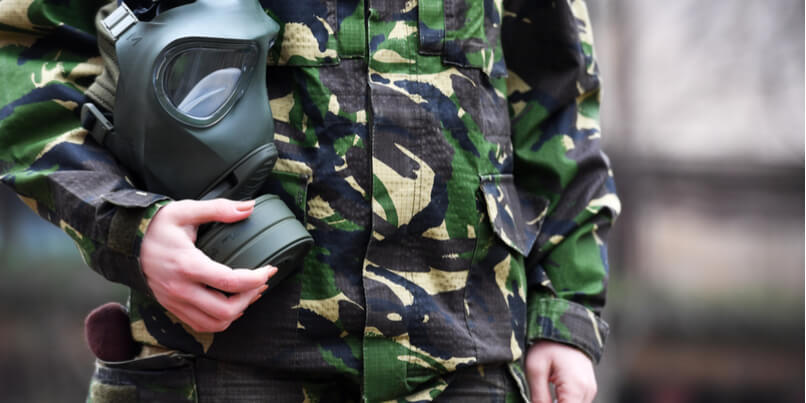 Group based Live Agent Training (LAT) provides military personnel and first responders with an unrivalled opportunity to gain practical experience in the detection, identification and decontamination of toxic chemicals and chemical warfare agents (CWAs).
Group based Live Agent Training (LAT) provides military personnel and first responders with an unrivalled opportunity to gain practical experience in the detection, identification and decontamination of toxic chemicals and chemical warfare agents (CWAs).
And when considered as part of a wider training strategy, LAT is often regarded as the preferred method to ensure that personnel are fully prepared for the challenges of live CWA operations.
But alongside the undisputed value of LAT, there are also some important practical and logistical considerations to bear in mind.
Exploring Live Agent Training (LAT)
Immersion in a live exercise situation and real-time exposure to the hazards of hostile substances, can be hugely beneficial in honing trainees' decision-making abilities, testing their stress management and enhancing their operational efficiency.
The key elements of a LAT programme will likely include: site orientation; safety compliance; donning and doffing of chemical protective clothing/PPE; preparation of samples for transport; decontamination operations; and the appropriate responses and countermeasures in the event of incidents involving CWAs or toxic chemicals.
At the same however, LAT is not a one-size-fits-all training solution and there are some key considerations that CBRN instructors may wish to keep in mind:
Risk
Any LAT exercise carries with it an inherent level of risk. LAT scenarios will need to operate within accepted Occupational Exposure Limits (OELs.)
Participants may be required to attain medical clearance depending on the complexity of training they are undertaking. And an advanced degree of proficiency is often expected of trainees in order to be considered suitable to take part.
Environmental considerations
The highly toxic nature of live sources in even the smallest of quantities means there will be restrictions as to where and when LAT exercises can take place.
Environmental analysis (such as air sampling) will be required seasonally to take into account weather/wind variations.
Some exercises may also be best suited to (or be required to take place in) a specialist live agent facility.
Equipment and consumables
Where possible, it's preferable for students to be able to use their own equipment (detectors, PPE etc) in live agent training exercises.
But the implications of post-exercise decontamination (the cost involved and the inconvenience of taking equipment out of commission) can make LAT less than practical.
The cost associated with purchasing, storing and transporting live sources can also make LAT impractical and restrict the frequency of training.
CWA training using simulators
So what options exist when LAT simply isn't possible or practical?
For many CBRN instructors, simulator training can often prove a viable alternative and brings with it four key benefits:
1) Realism
The intelligent nature of the computer-based simulation tools used in simulation training helps to create highly realistic scenarios for trainees.
The simulated threat can be implemented physically (using a deployed simulation source) or virtually (via a computer-generated threat system).
2) Safety
No actual CWA substances are used in simulator training, so there is zero risk of contamination to personnel by means of chemical / radioactivity, the environment or expensive detector equipment.
Scenarios can also take in any location, including public areas, and regardless of environmental or weather conditions.
3) After Action Review
An inherent challenge for any form of CWA training is to ensure that the unique challenges of the threat, and the hazard environment, have been accurately represented.
Post-training analysis, in the form of After Action Review (AAR), is a vital element of the training scenario. It ensures the trainee and the instructor that detector equipment was operated correctly and consistently. It confirms that no false lessons were learned. And it can enable future scenarios to be amended or enhanced.
4) Preparation for LAT
LAT is widely considered to be the pinnacle of CWA training due to the fact that it provides the closest experience to that which personnel will confront in the field.
But not all personnel are necessarily ready to undertake the complex challenges of LAT. And a live agent scenario is certainly not the time for trainees to be learning how to use their detector equipment.
In such situations, the use of simulated sources offers a viable and realistic alternative, and act as an excellent predecessor, to LAT.





